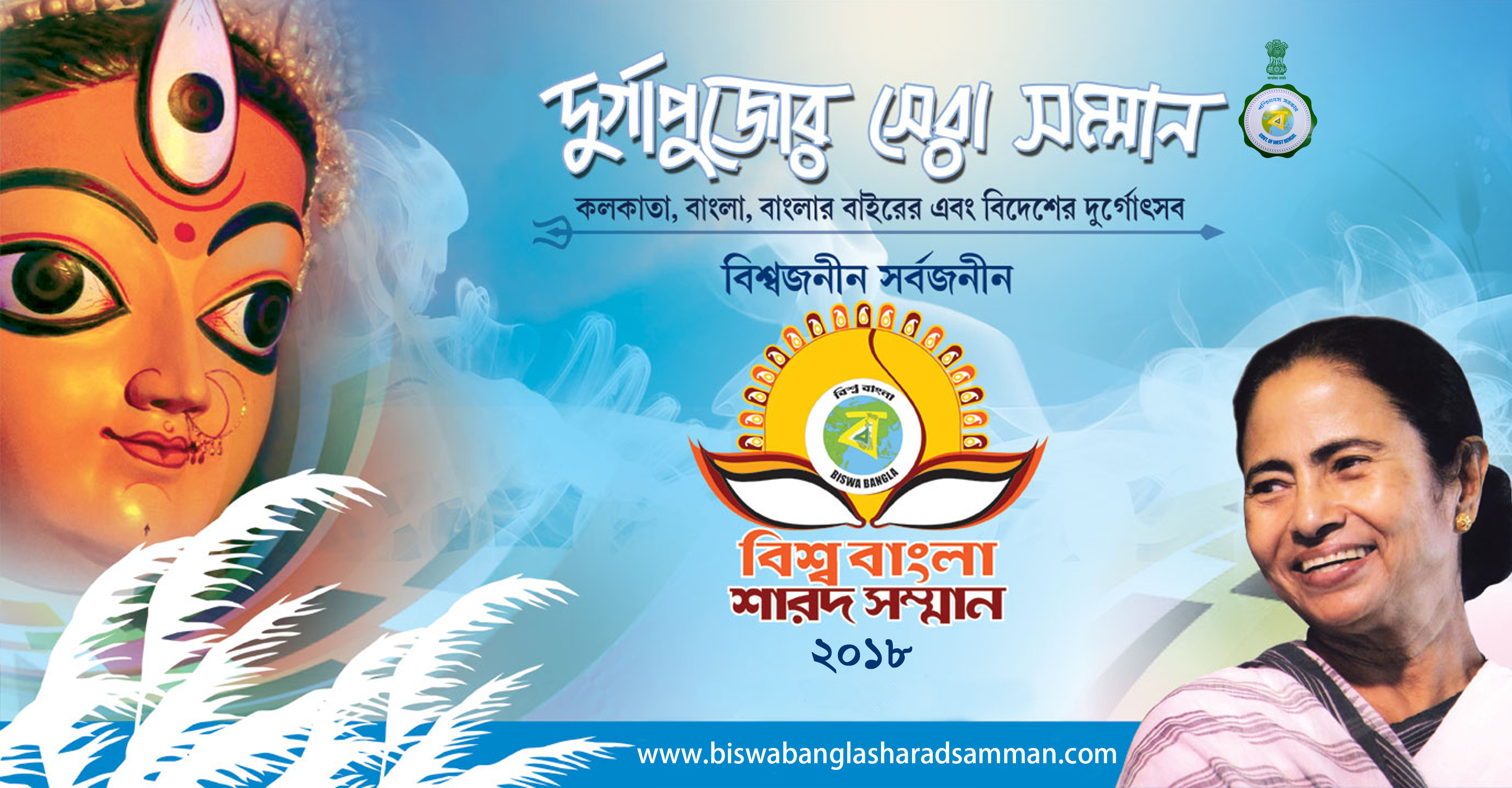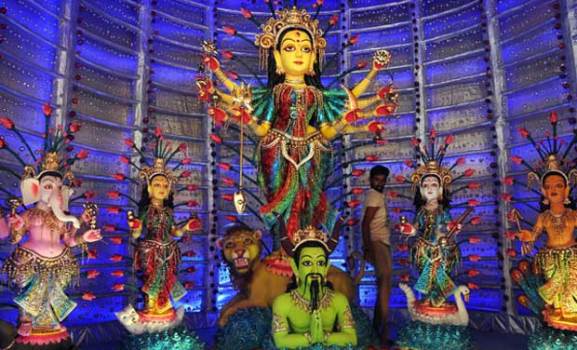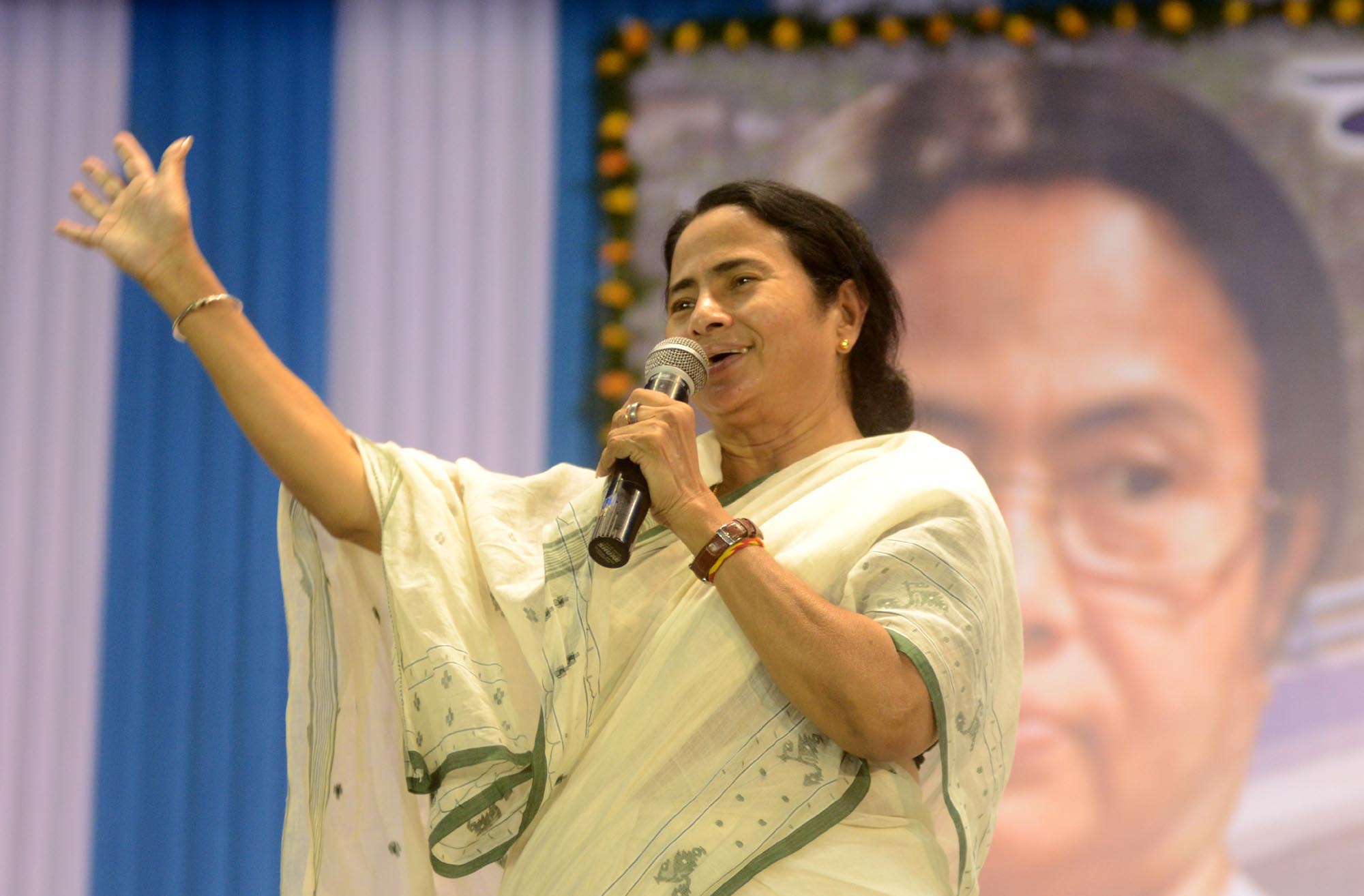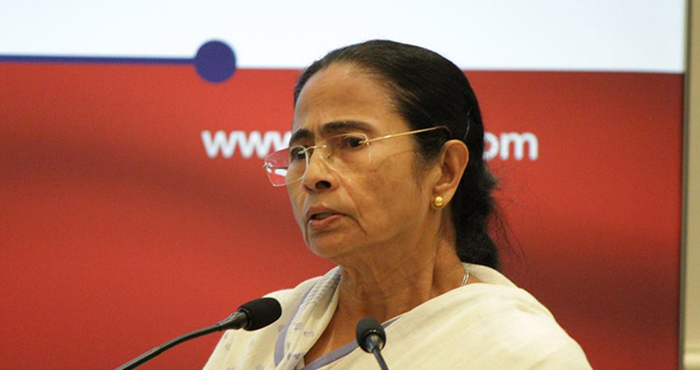The State Government has announced the Biswa Bangla Sharad Samman for the year 2018.
The organisers as well as the people wait with bated breath for the announcement of the winners of these prestigious awards.
Here is the list of winners for 2018.

The State Government has announced the Biswa Bangla Sharad Samman for the year 2018.
The organisers as well as the people wait with bated breath for the announcement of the winners of these prestigious awards.
Here is the list of winners for 2018.

Like every year, Kolkata Police has unveiled the guidemap for Durga Puja 2018. Live information about 1,800 puja pandals will also be available from the ‘Bandhu’ app. Apart from ‘Bandhu’, people can also track waiting time and queues from the ‘Utsav’ app.
Kolkata Police has planned to come up with live streaming of some major puja pandals throughout the city, during this year’s Durga Puja. The number of ‘Bandhu’ app users has crossed 2.5 lakh. This year, people can monitor live information about almost 1,800 puja pandals throughout the city.
Apart from ‘Bandhu’, another app called ‘Utsav’ was also introduced a few years ago for Durga Puja. Kolkata Police has also informed that the ‘Utsav’ app has now been upgraded with some new features. Through this app, people can easily track the locations of the pandals and can find the ways to reach them.
Also, a new section has been added in the app for the puja committees. From now on, puja committees will be able to upload details of their pandals such as theme, attraction details, images and many more on the app. This would help them to attract more pandal hoppers.

To prevent pollution of river water, Kolkata Municipal Corporation (KMC) has decided to set up a boundary with nylon nets around certain zones along the Hooghly river where immersions of Durga idols would take place.
The nets would prevent the idols and decorations from floating away, which would then be picked up by cranes employed by the KMC.
This technique will be used at the immersion points of Baje Kadamtala Ghat, Judges Court Ghat and Nimtala Ghat. The first one is where most of the big Pujas conduct their immersions.
Source: Aajkaal

Like every year, this year too, the State Fisheries Development Corporation (SFDC) will be serving special dishes at its five restaurants in Kolkata during Durga Puja.
The five are located at Nalban Food Park, Nabanna, Eco Park, Bidhan Sishu Udyan in Ultadanga and in front of Nicco Park. The food will be served in bell metal (kansa) or terracotta plates.
This year, the highlight will be fish items associated with the famous traditional pujas of zamindars of Kolkata and temple pujas of other places in Bangla.
The organisation is finalising the menu in consultation with the descendents of Sovabazar Rajbari, Sabarna Roy Choudhury Rajbari and other famous rajbaris of Kolkata. With respect to the temple pujas, one will be able to relish the magur macher tok of Sarbamangala Temple in Bardhaman and shol pora of Kanakdurga Shrine at Chilkagarh in Jhargram, among others.
The bhogs served at some of the traditional pujas of Kolkata will also be an integral part of the menu.
People will be able to try out boroli, the famous delicious fish from the streams of north Bengal, now being cultivated by the SFDC in three large waterbodies in Kolkata and Memari, and groupers and Indian pompano, also being cultivated by it in the last few months.
There will be a discount of 7 per cent in the thali items and on ordering over the online delivery app, Smart Fish (during the Puja days).
The SFDC will also set up stalls at the premises of 23 famous Durga Pujas in Kolkata, including Singhi Park, Hazra Park, Kalighat Milan Sangha and Hindustan Park in south Kolkata, and Jagat Mukherjee Park, Sovabazar, Tala Sarbajanin and Nalin Sarkar Street in north Kolkata.
Source: Millennium Post

A CD containing songs composed by Chief Minister Mamata Banerjee will be released on Mahalaya. These songs have been sung by Indranil Sen, Lopamudra Mitra and Rupankar Bagchi.
Mamata Banerjee has written eight songs and composed the music for them too. Excerpts of the lyrics from two of the songs are: ‘Roudra chayae sakalbelae dustu misti hanshi, roder khelae barbar phire ashi,” and ‘Pal tol, pal tolre majhi’.
Despite her busy schedule, she composes songs while on tour and later adds tunes to them. It may be recalled that last August, Matri Maa, a CD containing nine songs written and composed Mamata Banerjee, was released during a function at Nazrul Mancha. It became a gold disc.
Mamata Banerjee is proficient with the electric organ, which she plays often in her spare time, after the days’ hectic work is done.
Source: Millennium Post

Earlier today, Chief Minister Mamata Banerjee spoke at a business meet in Milan, Italy jointly organised by ASSOLOMBARDA, Italian Trade Commission, FICCI and the Bengal Government. It was attended by potential investors from Italy.
She spoke on the strengths of Bengal and on the synergies that Italy and Bengal can create in various sectors. At the business meet there were detailed discussions on the possibilities of investment from Italy in sectors like infrastructure, manufacturing, design and innovation, ICT, leather, textiles, agro-processing, tourism and automobiles.
Here is what she said, while addressing the Italian investors:
Italy and Bengal are very similar in nature because Italy had their Renaissance in the 16th century and in Bengal too a Renaissance happened, in the 19th century. There is a big similarity. You have the art, the culture, the technology, the systems, the mechanisms, you have had so many renowned artists, and everybody says that Bengal is the cultural capital of the world. Bengal has produced so many renowned sons of the soil, like Tagore and and Netaji. You have so many experts from the fields of leather and technology. We respect all. We also love your foods, like pasta. We love your football too. Bengal is a land of football lovers, and we love Italian football too. Everybody is proud of Italy’s prowess in football.
I had come to Italy earlier, to the Vatican, on an invitation from them, in September 2016 when Mother Teresa received sainthood. Mother Teresa belongs to Kolkata. The Missionaries of Charity’s headquarters is there, and we maintain the best of relations with them.
You have so many industrial partners in India, about 600, and you have invested in Bengal too. We want to build up further on our relationship. Italian companies have invested in India in sectors like transportation, food processing, textiles, electronic equipment, leather technology, etc. The relation between Italy and Bengal can be scaled up. We are taking major steps in setting up design centres; Italy can be a major partner in that too.
Throughout history, Bengal has produced so many luminaries in so many fields. Now Bengal believes that Bengal means business. We have social commitment as well as commercial commitments. With respect to the former, we give free treatment to the downtrodden and we encourage empowerment of the girl child; we have policies to suit every stage of a person’s life – we give free saplings when a child is born, we provide money for cremation to the families which can’t afford it.
With respect to business, it is important to remember the strategic location of Bengal. It has historically been the centre of business; it is the gateway to South and South-East Asia – to Nepal, Bangladesh, Bhutan, Singapore, Bangkok, Kuala Lumpur. This is why Bengal has a major role to play. Bengal serves as a major hub in the trade route to south-east Asian countries, to the landlocked nations of Nepal and Bhutan, and to north-east India too – the eight sister States. Bengal’s population is also very significant.
If you look at the GSDP growth rate, that is, gross state domestic product, for 2017-18, at constant price, it is 9.15 per cent, compared to a growth in GDP for India at 6.7 per cent. Bengal has a higher growth in every sector, from agriculture to industry to services.
Italy has great experience in various technical fields whereas Bengal has skilled manpower, an aspect in which we are number one in India. Bengal has talented manpower at a price which is cheaper than in other parts of India, and the world as well. Bengal leads in education and culture. In skilled manpower, the MSME sector and e-governance, we are number one in India. In ease of doing business too, we are number one.
We also believe in grassroots development. We believe that like two sisters, agriculture and industry must live together, and in both, Bengal is doing very good. We have a land policy and a ready land bank. We have power available for industry 24×7. We also have rural electricity connectivity. The number of man-days lost has come down from about 80 billion to zero. An industry-friendly policy is also there, so too an MSME policy, a textile policy, an IT policy, an agricultural policy and a tourism policy. We also have food security, a health-for-all policy in the form of Swasthya Sathi, housing policy for the poor, environment policy, environment-friendly transport system and provide education for the marginalised people.
Our beauty is that we all work together – all castes, creeds and communities. We do not differentiate on this count. We believe that humanity is like a family.
Bengal has a great potential in the leather industry. We have a leather hub. You, the Italians, are famous for your leather industry. So we can use your experience and you can transfer your technology for our growth. So let us all work together. Italy is great in technology and Bengal is great in steel and mining.
We invite Italian companies to invest in Bengal. If you have the vision, Bengal has the mission, if you have the action, Bengal has the reaction, if you have the technology, Bengal has the manpower. So if you want to compare, we are like twin sister states – India and Italy. I believe our Indian government, our embassy will give full support to Italian industry. We are like a family. You invest your money in Bengal, and in other regions of India too. India is like your sweet home.
In modern diagnostic laboratories, there is equal importance of doctors and technologists. Keeping this in mind, the State Government has brought about certain changes in the Clinical Establishment Rules (Registration, regulation and Transparency) 2017.
All big and medium-sized laboratories need to employ BSc and higher-qualified personnel, and not just diploma holders. Till now, it was enough to have just Diploma in Medical Laboratory Technology or DMLT-qualified technical personnel in diagnostic laboratories in the State.
According to people linked to this issue, including the creator and course coordinator of the Bio-Medical Laboratory Science and Management or BLSM course in the State, the new rules would help in two main ways – better laboratory reports and employment creation for highly-qualified people.
The new rules lay down that all mid-sized blood-testing laboratories need to have BSc (BLSM) graduates or DMLT postgraduates too, alongside the diploma holders that they now employ.
For the big diagnostic laboratories, conducting a wider variety of tests, the rules are stricter to ensure better quality control: they must employ postgraduates (that is, MSc) in BLSM, alongside BSc (BLSM) or PGDMLT-degree holders.
Source: Bartaman

The State Government is going to start a 10-storeyed trauma care centre (TCC) At SSKM Hospital. This would be the second such centre, after the one at RG Kar Medical College & Hospital.
It will cost Rs 20 crore to build and will start operating by the end of this year. The government has plans to build such TCCs at all the six teaching hospitals in Kolkata, where a large number of trauma patients are admitted every year.
The centre will have all arrangements for emergency operations for road and air accident cases of severe neuro-surgical and orthopaedic injuries.
There will be facilities for pre- and post-surgery treatment for severe head injury cases.
Source: The Statesman
Image is representative

The State Tourism Department has plans to project Kolkata as a hotspot for MICE (meetings, incentives, conferences and events) tourism.
The department’s principal secretary made this comment at a conclave arranged by the India Convention Promotion Bureau (ICPB) at the state-of-the-art Biswa Bangla Convention Centre in New Town on August 30.
He also mentioned that Bangla in general has a big potential to grow MICE tourism and the State Government was making all efforts to make that a reality.
He also said that if the number of direct flights with some parts of world could be increased, then it would be a plus point for the tourism sector.
The State Government is looking into business tourism very seriously and is going all out to formulate strategies for making it a success.
Source: Millennium Post

Mamata Banerjee has been the face of the land movement in Bangla. It was she who fearlessly fought against the tyranny of the Left Front Government during the Singur and Nandigram movements.
In 2006, the Left-led Government acquired 997 acres of multi-crop land for a car factory in Singur. The forcible acquisition, which was made under the colonial Land Acquisition Act of 1894, led to protests all over Bangla, led by Mamata Banerjee. She even went on a hunger strike for 26 days for the sake of farmers’ rights.
In 2011, Mamata Banerjee became the Chief Minister of Bangla after the people voted in large numbers for a change of guard in the State. Since then, the Government has taken up numerous initiatives for land reforms.
Here are some of the most important achievements:
Singur verdict
In compliance with the landmark verdict of the Hon. Supreme Court of India, land amounting to almost 980 acres, situated within the erstwhile Singur Project Area, has been returned to almost 12,000 families dispossessed by the project, after making the land suitable for cultivation.
New Land Bill
Following the footsteps of Bangla, the Right to Fair Compensation and Transparency in Land Acquisition, Rehabilitation and Resettlement (Amendment) Bill, 2015 was introduced in the Lok Sabha on February 24, 2015. The Bill replaced the Right to Fair Compensation and Transparency in Land Acquisition, Rehabilitation and Resettlement (Amendment) Ordinance, 2014.
Land Policy
From 2011 to 2018, many important policy decisions have been taken for achieving better administration, regulation and management of land:
In a bold policy initiative, the State Government has decided to waive tax on agricultural land. This will go a long way in not only mitigating hardships faced by farmers but also boosting agricultural output and income.
The Land Allotment Policy was formulated in financial year (FY) 2012-13 in order to introduce uniformity, reduce discretion and ensure transparency while dealing with public assets. The policy laid down a transparent process for allotments of land along with the terms for such allotments.
The Land Purchase Policy was introduced in FY 2014-15 to enable the State Government and its parastatal agencies to purchase land for infrastructure projects through a process of direct negotiation with willing landowners against just compensation and incentives. The scope of this policy was extended to land purchase for Central Government departments as well in FY 2016-17. The stated policy of the State Government is that there will be no forceful acquisition of land. The purchase policy of the Government is thus consent-based and transparent. So far, the Standing Committee on Industry, Infrastructure and Employment has cleared direct purchase of about 950 acres for various projects of public importance.
The State Land Use Board has developed a Land Bank of available land in all the districts of Bangla with a view to ensuring availability of land for infrastructural development for industries and other developmental work, including flagship projects of the State.
Amendments to Section 14Y of the West Bengal Land Reforms Act, 1955 were carried out in 2014 to broaden the scope of the section. Now entrepreneurs may, with prior permission of the Government, utilise ceiling-surplus land to set up units for various industrial and social infrastructural activities in sectors like information technology, shipbuilding, township, transportation terminal and logistics hub, in addition to existing sectors.
Land Use Map
Utilising the concept of index-linked land use, zoning maps were introduced in FY 2011-12 for the use of investors. Land Use Maps broadly contain parameters like dry/ barren land, single-crop land, double/ multi-crop land, forest land, metalled roads, national /state highways, railway network, waterbodies, etc.
Nijo Griha Nijo Bhumi
NGNB (launched in 2011) provides up to 5 decimal land to eligible beneficiary families (all rural landless and homeless agricultural labourers/ artisans/ fishermen). Almost 2.2 lakh NGNB pattas have been distributed under this scheme so far.
From 2011 to 2017, a total of more than 3 lakh pattas (including NGNB, agricultural and forest pattas) were distributed.